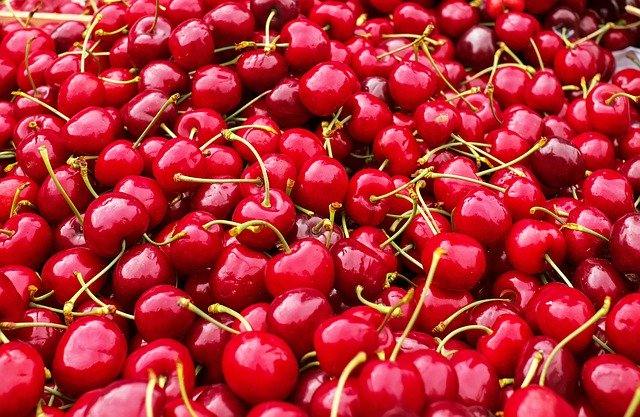Cherries are probably one of the best fresh summer produce ever. You can eat it straight out of your hand and enjoy it as a simple dessert or snack. There are several types of cherries, and some of them have black, red, yellow, and pink colors. Each of them has different tastes, and they grow in different seasons. In this article, we are going to talk about cherries, how they grow, and their different types.
Types of Cherries
Cherries are considered to be a stone drupe, which means that their outer flesh covers their hard center seed. Cherries are related to peaches, apricots, and plums. Their season generally varies from May to August, but sometimes, it depends on their location. Here are the different types of cherries:
- Bing Cherries – This type of cherry has a distinctive heart shape, and this is usually the cherry that you see in the national market. They are juicy, firm, and large, Bing cherries have a deep red color that turns into a right mahogany shade when ripe. Bing cherries have an intensely sweet taste along with a vibrant aftertaste.
- Chelan Cherries – Also known as black cherries, this type of cherries are typically grown in the Pacific Northwest. They have a round appearance and a firm texture, along with a robust taste. Just like the Bing cherry, Chelan cherries also have a deep mahogany hue and a sweet flavor. This type of cherry is highly resistant to rain cracking, which gives them a longer shelf life compared to other kinds of cherries.
- Lapins Cherries – Lapin cherries is a crossbreed between Stella and Vans cherries. This type of cherry can grow up to 1 in size, and it has a hardy and dark color along with a mildly sweet taste. Lapin Cherries ripens two weeks after the Bing cherry does, and it can only be available for just a short week.
- Rainier Cherries – Rainier Cherries have yellow skin and flesh with just a dab of red blush. This two-toned cherry has a sweet flavor with a hint of tartness. Rainier cherries often ripens later in June, and it is available through August.
- Allure Cherries – This type of cherry is tarter compared to the other types. However, they still have that same dark red color, just like the Chelan and Bing varieties. They are perfect for people like a tangy aftertaste to their fruit. Allure cherries often grow in California, and they ripen one week earlier compared to Bing cherries.
- Lambert Cherries – This type of cherry are firm and large, plus they have a red color throughout. They are sweet, and you can eat them straight out of your hand. They are perfect for baking because they can maintain their texture when they are cooked.
Choosing the Right Cherries
When you’re shopping in fresh local markets, always make sure that you sample sweet cherries before buying them. This is because their sweetness just needs to taste. Take note that Tart cherries are softer, smaller, and acidic. Bing and Rainier’s cherries are the most abundant type of cherries. Always go for cherries that are large, glossy, firm, and plum. Remember to avoid cracked, injured, and misshapen. Cherries that still have their stems attached tend to have a longer shelf life than those who don’t.
Storing Cherries
Keep your whole cherries unwashed and store them in a breathable plastic bag before putting them in the refrigerator. Remember to wash them before serving and consume them as soon as you can. This is because they can soften and depreciate quickly.
Using Your Cherries
Before you consume or use your cherries for cooking, make sure that you remove their stems first. You can easily do this by using a cherry pitter. But be mindful that cherry juice can stain countertops and fabrics so you might want to prepare them near the sink. Sweet cherries are good to eat on their own as a snack, but almost all cherry varieties can be used in preserves, pies, salads, and even ice creams. Cherries will surely add a burst of flavor to savory dishes such as chicken, lamb, and pork.
